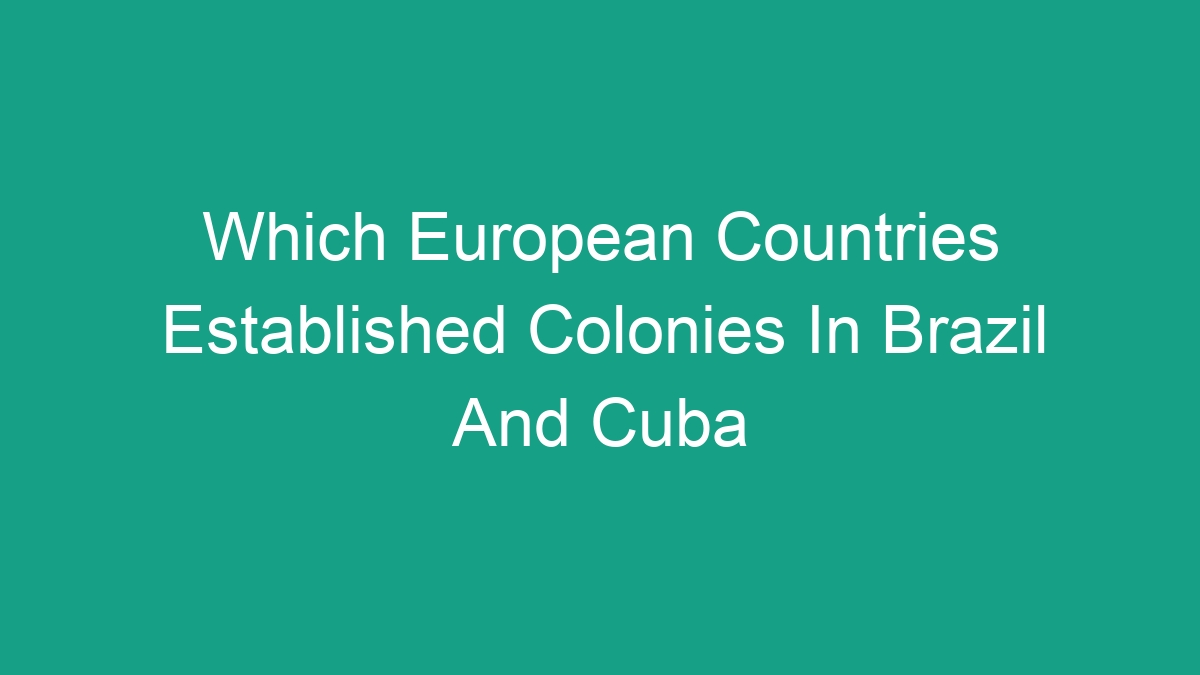
During the Age of Exploration, European countries were seeking to expand their power and influence by establishing colonies in various parts of the world. Two of the most notable areas that were colonized by European powers were Brazil and Cuba. In this article, we will explore the European countries that established colonies in Brazil and Cuba, the impact of colonization on these regions, and the lasting effects of European influence.
Portuguese Colonization in Brazil
Brazil was colonized by the Portuguese in the early 16th century. In 1500, the Portuguese explorer Pedro Álvares Cabral arrived in what is now Brazil and claimed it for Portugal. The Portuguese initially focused on the extraction of Brazilwood, a valuable resource used in dye production. However, as the colony developed, the Portuguese also established sugarcane plantations and began importing African slaves to work on the plantations.
The Portuguese colonial system in Brazil was characterized by large-scale agriculture, slavery, and the exploitation of natural resources. This system had a profound impact on the indigenous population and the environment, as the Portuguese sought to extract as much wealth from the colony as possible. In 1808, Brazil became the seat of the Portuguese Empire and the capital was moved from Lisbon to Rio de Janeiro, marking a significant shift in the relationship between Portugal and its colony.
Spanish Colonization in Cuba
Meanwhile, Cuba was colonized by the Spanish in the late 15th and early 16th centuries. The Spanish conquest of Cuba was marked by violent conflict with the indigenous Taíno people, who were decimated by disease, warfare, and forced labor. The Spanish crown established a colonial administration in Cuba, focusing on the cultivation of sugarcane and the extraction of resources such as gold and silver.
Under Spanish rule, Cuba became a key hub in the transatlantic trade network, with Havana serving as a major port for the shipment of goods to and from Spain. The Spanish also brought African slaves to Cuba to work on the sugarcane plantations, contributing to the growth of the colony’s economy.
European Influence and Legacy
The colonization of Brazil and Cuba by European powers had a lasting impact on the social, economic, and cultural development of these regions. European influence can be seen in the languages, religions, and customs of both countries, as well as in their political and legal systems.
In Brazil, the Portuguese legacy is particularly strong, as the country gained independence from Portugal in 1822. Portuguese is the official language of Brazil, and the country’s culture and cuisine bear the imprint of Portuguese influences. The legacy of slavery also looms large in Brazil, as millions of Africans were forcibly brought to the country to work on plantations, contributing to the vibrant Afro-Brazilian culture that exists today.
In Cuba, the Spanish influence is evident in the country’s architecture, music, and cuisine. The Spanish legacy is also reflected in Cuba’s political and legal systems, as well as in the continued presence of Catholicism as the dominant religion. However, the legacy of slavery and the complex relationship with the United States have also shaped modern Cuban society and culture.
Conclusion
In conclusion, the colonization of Brazil and Cuba by European powers has had a profound and lasting impact on these regions. The Portuguese and Spanish legacy can be seen in the languages, religions, and customs of both countries, as well as in their political and legal systems. The exploitation of natural resources and the use of African slaves by European colonizers also continue to shape the social and economic dynamics of Brazil and Cuba today. As we continue to explore the history and legacies of colonization, it is important to remember the complex and often painful impacts of European influence on these regions.



